Cotonou is the largest and most important city in Benin. It is where we find the international airport, our first point of arrival in the city that will surely surprise you. Despite being the most populated city, it is not the official capital of Benin. This is Porto Novo. Cotonou, which means in Fon language “the mouth of the River of Death” by a very large food there they had, it was a fishing village during the kingdom of Dahomey that the French, once they colonized the country, turned it into a commercial city.
One of the first surprises when arriving by air to Cotonou is that the airport is located in the middle of the city. Accustomed to having airports on the outskirts of big cities, Cotonou is different. The airport is very close to the Cocotiers neighborhood, one of the most modern neighborhoods of the city where we find the main embassies.
The second surprise you will find will be the different markets in Cotonou, such as Dantokpa, located next to the shore of Lake Nokoué and considered one of the largest markets in West Africa. Getting lost in this market is a must not to be missed.
Another market that is less known but very interesting to visit is the Wlacodji fish market, a place where you can see how they smoke the fish and then sell it. Despite the amount of smoke, it is very interesting how they work with fish, one of the main resources of many families in Benin.
The third surprise you will find is on an artistic level. In Cotonou, there are some streets where the walls are full of graffiti symbolizing different elements of modern African culture. In addition, it is very interesting to see the design of different dresses and shirts worn by local people. In the city, you can make several purchases of carved wooden sculptures in the market, as well as in the city’s Craft Center.
The fourth surprise you will find is the local life during the weekend on the beaches of the city, especially on Fidjirosse beach where you can walk on the sand and see the waves of the Gulf of Guinea with different fishing boats.
And, finally, the last surprise you will find is the number of motorcycles in this city, where you can get on a Zem, which are the motor-taxis that honk the horn all the time. Cotonou is a populated city, with a chaotic traffic but at the same time offers you many activities to do such as visiting the floating village of Ganvié (you can read our experience here), visiting the history of slaves and voodoo in Ouidah (you can read more in this article), visiting the capital of Porto Novo and its Afro-Brazilian influence (click here to know more) or disconnect on the beaches of Grand Popo, about 2-3 hours from Cotonou (if you want to see our experience in Grand Popo, click here).
In short, Cotonou is your arrival point in Benin that will surely surprise you and that we recommend that you do not skip during your visit to Benin, a country full of traditions, culture, tribal groups and markets.
How to get there?
Cotonou is the arrival point for travellers arriving by plane, because the international airport is located there. One of the advantages of this airport is that it is located in the center of the city, so you can take a taxi and in a few minutes it is in your accommodation.
From Cotonou, there are also different taxis and buses that travel through much of the country. Each taxi rank is located in a strategic place to take you to one place or another. For example, if you want to go to Ouidah or Grand Popo (west), the point where all taxis leave is next to Etoile Rouge square. If you want to go to Porto Novo (east), the departure and arrival point is.
For long-distance buses that can take you to Abomey, Natitingou or Djougou, there are different companies. We took the buses from ATT company. We bought the tickets in advance at the offices they have in the Plaza de l’Etoile Rouge and the day the bus left, we showed up an hour before there (the departure point is different from the place where you buy the tickets).
Finally, to move around Cotonou we advise you to do it on foot or with Zem. If you do it on foot, keep in mind that it is very hot at certain times of the day because there is a lot of humidity. With zem, prices are not very expensive and you will travel as many Beninese people do while enjoying the journey. Keep in mind that you will pay between 200 and 400 CFAs each way, although it will depend on the distance and your negotiation skills you have with the drivers.
What to do in Cotonou?
In the most populated and important city of the country we can do the following activities:
– Visit the Dantokpa market, one of the most important in West Africa
Markets are a characteristic feature of the African continent. The explosion of colours, the crowds of people, the makeshift stops, people charging up and down, and that general clutter that makes you feel like a tiny ant in the middle of a large nest are some of the sensations not to be missed during a trip to Africa. This feeling becomes even stronger when you visit Dantokpa, one of the largest markets in West Africa.
The name Dantokpa comes from the fon language. Dantokpa means lagoon and Dan represents one of the goddesses of voodoo represented by a snake with the colors of the rainbow. This market is located next to a artificial canal that connects Lake Nokoue with the Atlantic Ocean.
To get there, a good place to start exploring the market is under the Martin Luther King Bridge, also known as the Nouveau Bridge, and from where you can walk in the opposite direction to the canal to enter this bustling market. Remember that on Sunday the market is closed, so organize to go another day.
They say that the Dantokpa market is one of the largest markets in Africa, with an area of about 20 hectares, where you can find everything: clothing stalls, food stalls, handicrafts, wood, electronic products and even a market where you will see different elements related to the voodoo fetish, such as stuffed spirits. The market is divided into different sections, each of them specialized in a specific product. For example, in the food market you can find many women sellers who every day load their goods (tomatoes, onions, meat, fish…) to sell it in the market. In the clothing market, you can find colorful dresses and fabrics with very African designs. And at the craft market, you can even find some souvenirs to take home… In short, anything that isn’t sold on Dantokpa isn’t sold anywhere else.
Visiting this market is an experience not to be missed to immerse yourself in the chaos of the city. As always when you go to places with many people, we recommend that you monitor your belongings and do not remove your camera so as not to have problems with local people. Take some photos with your mobile if you want, but then save it and walk aimlessly through the market while you hear the shouts of the sellers, the haggling of the buyers, the whistles of the people who go up and down with full carts and that warn you to turn away, and the different smells and colors that you will find in one of the most complete markets in Africa.
– Take a Zem motorcycle to go to different points of the city
Zem is the main means of transport to move around Cotonou. You will identify their drivers because they all wear the same polo shirt, and when you walk you will feel that they will touch the horn to see if you want them to take you somewhere.
One of the surprises we had when we arrived in Cotonou was to see the number of motorcycles circulating in the city. It is crazy to see how in the chaos, everyone circulates without causing accidents. When you get on it and stop at a traffic light or before entering a roundabout, you will fully understand this chaos we are talking about.
Think about being very clear with the direction you want to go and make sure the taxi driver knows where you are going. It’s also important to make the price clear before you go up. You will have to haggle, but we recommend that you do it… It’s fun! From this last year, they have put a regulation where only one person per motorcycle can climb. In any case, we often got both on a single motorcycle, since the motorist already knew the points where the police were doing checks.
Travelling with zem through Cotonou is, without a doubt, one of the experiences not to be missed when you are in this city. And, think, you can even go to the airport with zem to say, with the breeze of the air and the sound of the streets, goodbye to this beautiful country that is Benin.
– Walk around Fidjrosse beach
Cotonou is a maritime city overlooking the Gulf of Guinea, on the Atlantic Ocean. The beaches of this city may not be as beautiful as those of the Grand Popo (if you want to read our experience, click here), but if you walk there for a weekend you will surely find a lot of atmosphere. You can access it with Zem from the city center.
The best known beach is Fidjrosse, where you will find different restaurants with music where local people will spend the weekend. You can walk along its beach while watching families playing and some fishermen painting or fixing their boats. In addition, the palm trees give a very interesting tropical view.
Cotonou has several kilometers of beach where you can enjoy a quiet walk next to its waters. It is not recommended much to swim due to the strong marine currents there, but it is an ideal place to escape the chaos of the city.
– Learn about the history of the country, visiting the Amazon statue, the Basilica of Notre Dame de l’Immaculée Conception or the Place de l’Etoile Rouge
Cotonou was a small fishing port belonging to the Kingdom of Dahomey. This kingdom was one of the most powerful in the area from about 1625 to 1900, when it was defeated by the French. These turned Cotonou into a commercial point in the area and the small fishing village soon became the city we know today.

From the kingdom of Dahomey, an army of women who were very warlike and loyal to the king who were known as the Amazons of Dahomey stood out. His story is very interesting. If you want to know it, you can read this article from National Geographic. In the center of Cotonou, you’ll find a 30-meter statue of the Amazon as a symbol of national identity and a key part of this country’s history.
Another historical point of the city is the Basilica of Notre Dame de l’Immaculée Conception, the cathedral of Cotonou. Construction of this church began in 1949 and was inaugurated in 1955. It has a central tower of more than 50 meters, making it the highest church in Benin. Inside, you will find an important collection of sacred art and a very detailed decoration in the different rooms of the cathedral.
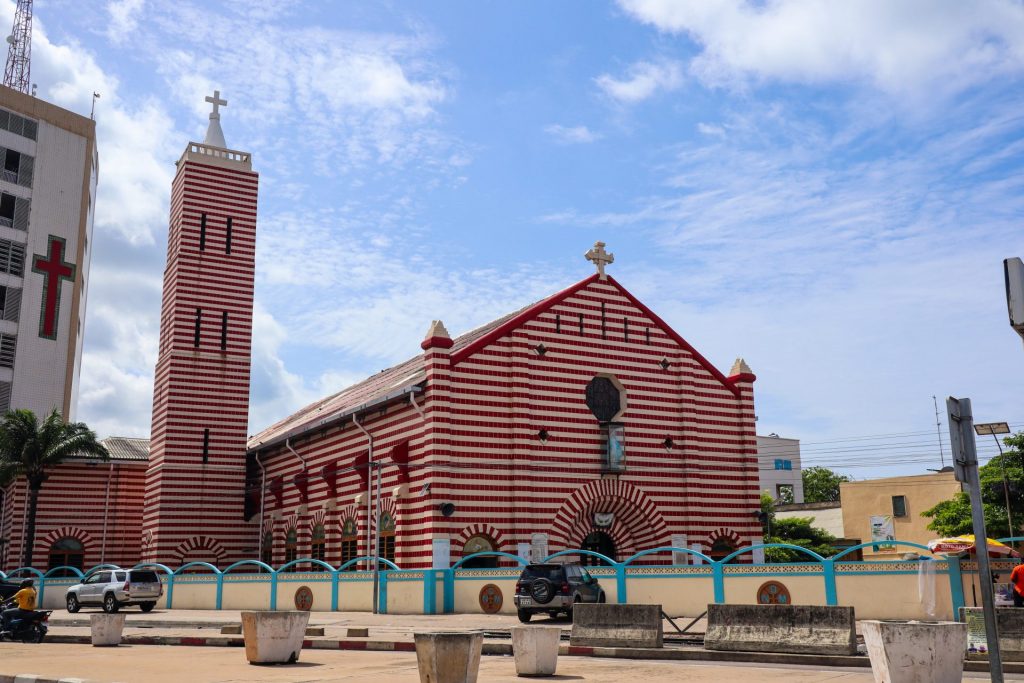
Finally, if you go to Cotonou with Zem, the motorbike-taxi, it is very likely that you will cross a square known as Etoile Rouge. It is one of the largest squares in the country where in the center, apart from finding taxis, you will find a monument in the shape of a star. This giant sculpture was a gift from Russia made in 1975 to celebrate Benin’s adopted the Soviet country’s Marxist and Leninist ideology. As you can see, Cotonou has a very diverse historical part represented by different architectural elements.
– Visit the small fishermen’s market in Wlacodji
On the outskirts of Cotonou, in the seaside Wlacodji district, you can find a market that is not as well known as Dantokpa but is very special. It is a small market where smoke is very present. There, women smoke the fish that men catch so that it is better preserved and sold for more days.
Seeing how they work with firewood, in a smoke-blackened environment and how women smoke fish is an experience not to be missed during your visit to Cotonou. Think that you are in a local market, so be very careful when taking out your camera. In general, African markets do not like to see cameras because they feel very intimidated, so we recommend that you ask permission if you want to take a photo and respect the decision and privacy of each person. Markets are not a circus, but an essential place for many African families.
– Get to know the artistic world of the city, such as graffiti walls, the craft center or the Zinsou foundation
Cotonou stands out more and more for its Street Art. There is a street that is located near the cathedral of Cotonou and the commercial port where you will find a mural decorated with graffiti and different cultural elements that symbolize the transition from tradition to modernity. In addition, in the Cocotiers neighborhood you can also find other Street Art areas.
Cotonou is also known for its craftsmanship, especially carved wooden elements that you can find in the Craft Center, a place where tourists go to buy different souvenirs to take home. It is not mandatory to go here to buy Benin art. In fact, we didn’t go there but it is a place they recommend if you want to buy a souvenir.
Finally, in Cotonou we also find the Zinsou Foundation, which stands out for being a space where you can see contemporary art by local artists who try to transmit Africa through their paintings. If you want more information about this site, you can click here.
– Stroll through the Cocotiers neighborhood
This neighborhood is one of the most affluent neighborhoods of the city, home to the main embassies, private schools and many of Benin’s lodgings. There, you will find high standing houses with private security and different restaurants and cafes to go for a drink. It is one of the quietest neighbourhoods in terms of crowds of people, so you can walk around very calmly. It’s called the Cocotiers neighborhood because some of the streets are lined with coconut trees.
– Visit the floating village of Ganvié
One of the activities that many people include during their stay in Cotonou is a visit to what is known as the Venice of Africa: the floating village of Ganvié. Many tourists take a round trip day boat tour, but we recommend that you stay overnight in Ganvié. Although there is not a very wide range of hotels and accommodation is very simple, we think it is essential that you stay there to discover Ganvié without tourists, which really is very beautiful, with its market before the sun rises and people returning home after a long day of work. For us, it was a great experience that we explained in a separate article to know how to get there and what to do. In this link, you can read a more complete article about this floating town.
Where to sleep in Cotonou?
Cotonou has a wide range of accommodations, many of which are located in the quiet district of Cocotiers. We used accommodation as a base camp that stands out because we felt very well cared for. Therefore, this for us is the best option to be during your visit to Cotonou:
– Guesthouse Haie Vive: Our base camp during our stay in Cotonou. It is a quiet accommodation with double rooms and also dormitories where you can cook and has a fridge and a small living room where you can relax while talking to the workers. It also has parking for those who come by car. It is located at one end of the Cocotiers district and from there, you can access different restaurants (do not miss the Lebanese that is on the same street) and very easily take any zem that takes you to different parts of the city. Great value for money and excellent human treatment. For more information, you can click here.
Our route
DAY 1: After 10 months on the African continent and having left our car in Cape Town, we faced a new stage of our sabbatical year in Africa. In this case, with backpacks on his back and stepping foot in the Gulf of Guinea for the first time. Our first destination was Benin, a place where many surprises would await us, and also the visit of Xoli, a star who does not stop traveling when she has time and who we were excited to come to Africa for the first time with us.
We arrived in Benin after sleeping in Addis Ababa, where we made a stopover and being long-lasting we were given a night in a hotel in the city. The arrival in Cotonou, the capital of Benin, was a landing in a world that we had not yet lived: that of motorcycles. International airports are usually located on the outskirts of the city, but the case of Benin was totally different: its airport was located in the middle of Cotonou. So when we left there, we walked to the street where many motorcycles passed and we took our first Zem, the taxi par excellence of Benin. Perched like a pack of a motorcyclist and loaded with two backpacks, we walked the first streets of that city where various differences were felt from the Africa we came from. Our destination was Guesthouse Haie Vive, where we would settle those first days to continue enjoying our African adventure.
The Haie Vive would be our base camp where we would store different luggage that we did not use, Esteve’s insulins would be well stored in the fridge and we could travel around the country on a first tour where Xoli would accompany us. Afterwards, we would return to the Haie Vive to take things and continue the journey by public transport to the north of the country to cross in Togo through the area of the Betammaribe Country, a more rural area and very different from the city of Cotonou.
We took advantage of that first day in Benin to do various tasks such as buying a SIM card and loading it with mobile data, withdrawing money from the bank, making a purchase at the supermarket, Esteve went to shave with a hairdresser while Laia was planning a little the following days. We were in a neighborhood where there were different embassies nearby, and one of the things that surprised us was finding Lebanese restaurants and supermarkets. It was a nationality that we had not yet found much in Africa, and we liked being able to practice Arabic after so long without using it.
We went to bed tired after a long trip and all the preparations that are made in a new place that you do not know. But, every time, we were taking more pleasure to riding a motorcycle, seeing a lot of people on the street, feeling how the rain fell… Yes, tired, but also with the illusion of continuing to discover this continent that has us so trapped, as if we were a child who goes to sleep during the night of the Three Wise Men… In Benin, we would discover different tribal groups, kings’ burials, floating villages, markets and some very interesting cultural traditions that revolve around voodoo.
DAY 2: That morning we got the smell of bread from the bakery opposite… An almost industrial bakery, where we went to get the bread of the day. It was noticeable that Benin was a French colony, because on the counter were croissants and bread bars. We exchanged the breakfast sliced bread from the English colonies of the previous months, for the French baguette. And with that change, we came out winning… Much better to have a baguette with cheese, than to have bimbo bread!
On the terrace of the accommodation we met Laurine, a young French girl, who decided to come to Benin and Africa for the first time, after finishing her studies. And, he’d been around for a few weeks now and was loving the African vibe and that experience. He had a good mentor, Michelle, an elderly French woman who lived in Natitingou, in the north of the country, and who had a son living in Natitingou and who preferred to spend the years of her retirement in Benin, and not in France. She invited Laurine to her home in Nati and there, the young Frenchwoman found a local and rural atmosphere that captivated her. An elderly Western woman spending retirement in Africa, a young French girl who falls in love with Africa… This continent has several faces, and one of them is a positive face that these two women from France transmitted to us with great enthusiasm.
In the morning, they would visit Dantokpa Market, one of the largest markets in West Africa; so we decided to accompany them and with a Zem for each of us we went by motorcycle to the side of a large river where thousands of stalls and people who worked in this market were concentrated.
Saying the largest market or largest waterfall is sometimes very difficult to justify. How do you know it’s the biggest market in Africa? Have you counted all the stops there are, including the street stops? How can we confirm this? Do they say this to be more important and attract more people? For us, Dantokpa was a very large market, we do not know if the biggest really, but what we have seen in Africa is that markets are the meeting point where many events happen on a day-to-day basis… Where people go to sell and buy, they negotiate, laugh, repair, rest, chat and live.
We had been under the bridge on the main road that crosses the river, as with 4 zems it was very difficult to go together. Finally, there we met and began to delve into the market. First of all, there were many shops selling African fabrics, appliances, clothing and bazaars where you could find everything. Then, once you entered some of the narrow corridors of this open-air market, you reached a point where you found the vegetable and fruit market: tomatoes, potatoes, mangoes… Many vendors were sitting on the floor, and in front of them, on a large blanket were their goods. If memory fails us, they were all women who also took their children to the market to sell… Women in Africa are an example of work, effort, tenacity, hope and future.
We arrived, then, at the meat area where the smells mix and where we began to see the first stray animals, and then we separated from Laurine and Michelle, who wanted to look for some goldsmithing products (set of dishes, cutlery…) for the Natitingou house, and we decided to tour the market aimlessly.
Targeting such a market is very difficult. There are many street stalls and the crowds of people sometimes make you take one corridor or another… It’s very easy to get lost out there. And, also, it’s a lot of fun… It was hard for us to get back to a street where vehicles were driving, but after a while, we achieved the goal and took a Zem for both of us to go home. We had bought tomatoes and could go to the accommodation to cook a good meal with fresh produce.
Taking a Zem is quite an experience… The boys (in this case, unlike the saleswomen, they are all men) are dressed in a green T-shirt that identifies them as taxi drivers. They keep peeing to see if there is anyone who raises their hand and I know the first to arrive to take that person and increase the clientele of that day. With us, they did too… Since there is no regulated price, it is clear that we had to haggle every time. And so we did it that time several times, until we got a motorcycle to take us both and thus it was cheaper. We told him the address, and after hesitating for a few seconds, he said yes. We insisted, since we know that in Africa by system everyone says yes, but that driver seemed convinced to know our final destination.
We moved between motorcycles, cars and people. Taking a roundabout in some of Cotonou’s most important squares was like being in a big city at rush hour… The drivers, in general, had a lot of experience in having no accidents, and we climbed the last avenue before turning and stopping the Haie Vive. We had only been two days but we were already starting to get to know the terrain. Suddenly, the bike nodded and said that we were going too far and that it should charge more… We saw that with this driver was going to have a problem… We insisted and since he did not pay attention, we decided to put foot on the ground to slow down. The driver began to disown, the typical theater that is done when you have a white man in front of you in order to get some money from what you said, but we wouldn’t be fooled so, since we were relatively close, we decided to pay what we had said and leave. This biker’s tactic with us didn’t work for him.
After eating a plate of pasta with vegetables, in the afternoon we would dedicate ourselves to doing laundry, hanging out clothes, doing a little blog and looking for information to visualize in our imagination a possible route during those following weeks.
DAY 3: In Cotonou, although we had only been there for two days, we already had a very marked routine: Esteve in the morning got up and went to get bread from the bakery in front and prepared breakfast while Laia woke up little by little.
We would take advantage of the fact that it did not rain to discover the city of Cotonou. We went to visit a Catholic cathedral and from there we walked to the market again, passing through a street full of graffiti that tried to symbolize different elements of African culture. After taking several photos, we went to ask in the northern area of the market, where there were many boats with passengers, when the boat that was going to Ganvié left. People were surprised to see us there… Usually, the guiris go on a private tour or some boats that leave from a specific place, but we wanted to travel like the locals, which apart from being cheaper would surely be more fun. Nobody gave us clear information until a man, shirtless and getting out of a boat, said yes, that we had learned very well that a boat was leaving for Ganvié, but that there was no specific time. Everything depended on the movement in the market, and the best we could do was go there in the morning and wait for the captain to decide to give the start. We thought it was a very practical tip. At least we knew where the local boat would depart for Ganvié. We returned to the accommodation to go to eat at a Lebanese where we ate very well. We would take advantage of the afternoon to go see the beach and take a walk on the sand.
We believe that in Cotonou it is impossible to find a quiet place. When we say quiet, we mean a place without much crowd. The beaches of Benin are filled with fishermen pulling the boat to get it out of the water, others who are painting or fixing their ships, couples who do the romantic thing by the water as Laia and Esteve also did, people who eat under palm trees, children running and a lot of atmosphere. But what we couldn’t find were bathers… And it is that in those waters you had to be very careful with the current and the force of the water, since it could drag you out to sea.
After that quiet, relaxed stroll, we returned to the accommodation to get handsome and go to a traditional food restaurant in Cotonou. Michelle, the French woman who lived in Natitingou, knew a place, and since they were already leaving the next day, we decided to have dinner together. We went to Chez Mamma Benin, a place where we could try different dishes of local Beninese cuisine that were spectacular.
After saying goodbye to Laurine and Michelle, we went to bed. The next day we received the fourth visit of the trip, after Laia and Joan and Berta’s family had come to see them in South Africa in the previous 10 months; and Stephen’s sister in Malawi. We were very excited to receive visitors, and at least it was Xoli, even more.
DAY 4: Good morning, do you know what we did during our third morning in Cotonou? Well, exactly! Esteve got up and went back to get bread of the day from the bakery opposite, while Laia slowly woke up. Today it was time to tidy up our luggage, fold our clothes and decide what we would leave at Haie Vive and take with us during the days we would travel with Xoli.
Xoli arrived in the afternoon, and what we would do would be a route of about 6 days without any guide through different places in southern Benin; and then a 4-day tour through the center of the country with Euloge, from Loana Travel, in order to discover different tribal groups in the country, their culture and their traditions. Finally, we would do a few more days in the Grand Popo area and return to Cotonou to say goodbye and continue with our trip to Benin.
We also took advantage of the fact that we were in Cotonou to present all the documentation in order to obtain a visa from Ghana, one of the countries we would visit that did not give a visa upon arrival at the border. Prepared with a lot of documentation (in Africa the bureaucracy in public matters is quite burdensome) such as accommodation reservations, departure flights, certificates, photos, photocopies, etc … We were able to leave all the information, and they warned us that they would tell us something to go get the visa and have the permission to visit a new country.
We had lunch at a cool restaurant in the neighborhood of our accommodation, which was the neighborhood of the embassies. It was noticeable that it was a more affluent place, with sidewalks on the shoulder of the road, houses with electrical wires and little vehicular circulation… In addition, there were many trees planted, which is why it is also known as the neighborhood of the Cocotiers.
In the afternoon, we went to the airport with Zem and were waiting for Xoli to arrive. Have you ever noticed when you travel by plane that at the arrival airport area there are people waiting with a smile for a being lover to come out, who is waiting behind the door of the airport? Well, we were one of those. After waiting a long time, Xoli arrived and had not slept for many hours, because he had spliced the departure from work with the plane.
We went to the accommodation, and there we prepared dinner and made a snack explaining all the news, adventures and how everything was, both on our trip and also in Catalonia. We didn’t go to bed too late, and we promised Xoli that the next day we would let her sleep a little so she could get back to sleep.
DAY 5: That morning, Esteve did the usual ritual but this time he decided to buy two loaves of bread. Laia, taking advantage of the fact that we had said that tomorrow we would sleep a little more, continued to dream; until after a few hours, we went to see if Xoli was already awake. We heard the shower, so good sign… It was time to make breakfast and start a new day at Haie Vive, a place that already felt like it was our home.
After breakfast, we chatted about planning those days and grabbed some Zems to go to the Dantokpa market. There, with Xoli, we walked through the different sections of the market, where every day thousands of people moved forming a very African sway. This snapshot of Africa’s markets are very different from markets elsewhere in the world… mainly because of the color. Africa’s markets are colorful, with cheerful dresses and a lot of life.
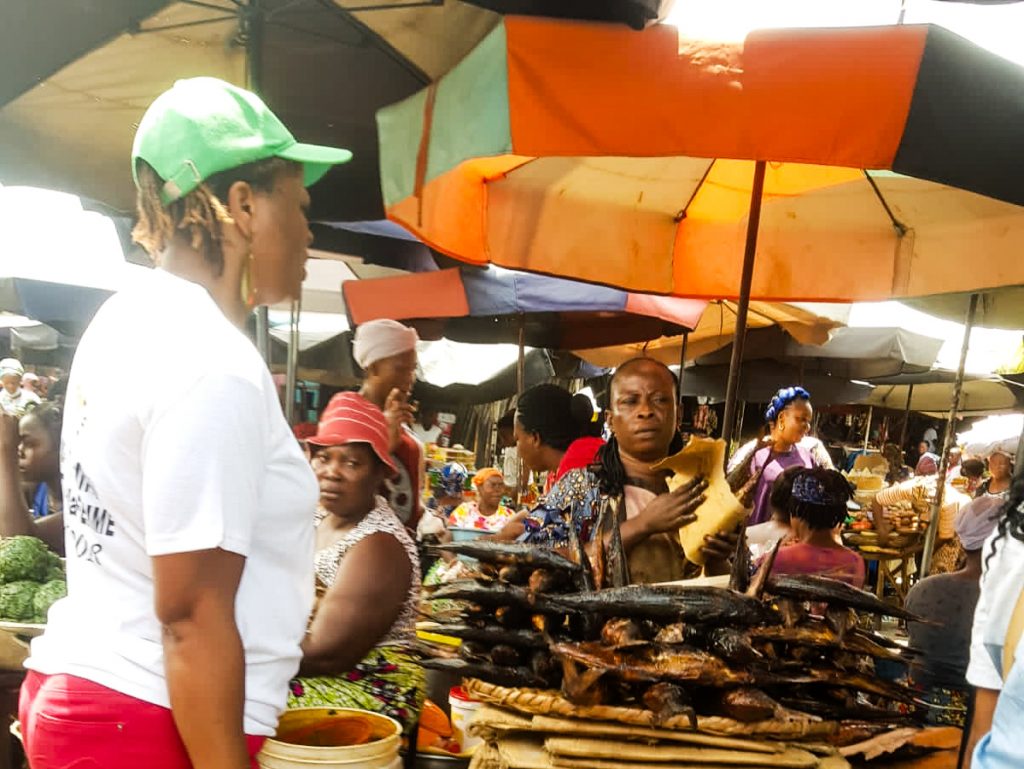
We headed back to Haie Vive for lunch, again, in Lebanese; and in the afternoon, we prepared our luggage in order to start a 10-day route through southern and central Benin, one of the countries we liked most during our sabbatical year in Africa.



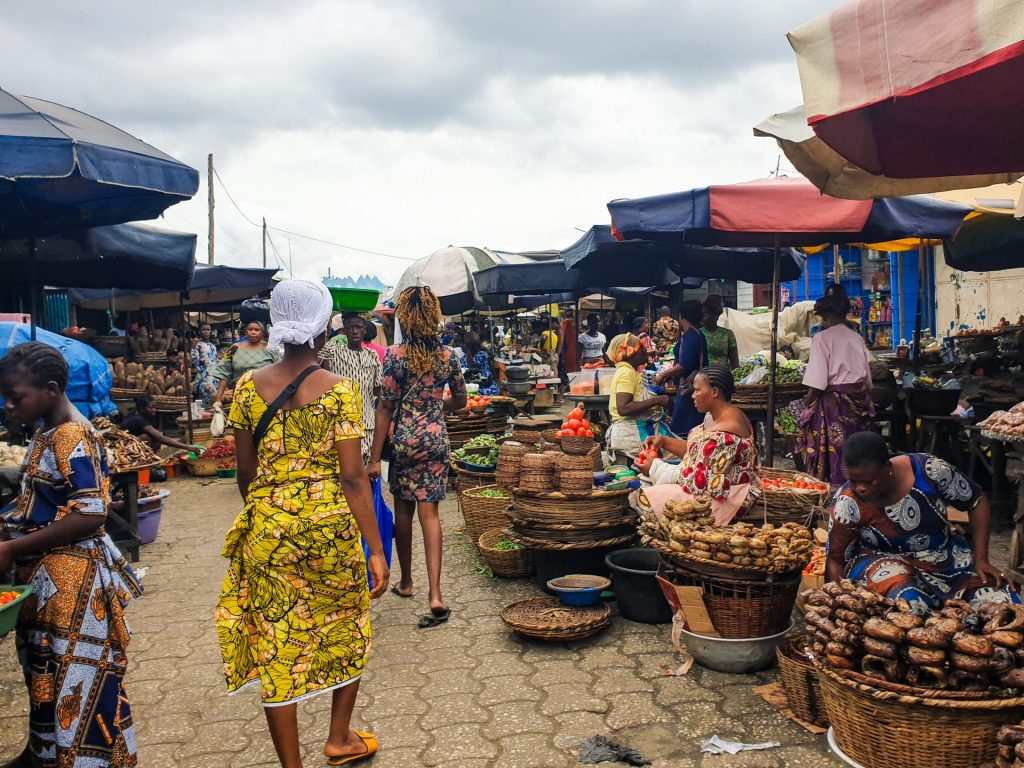





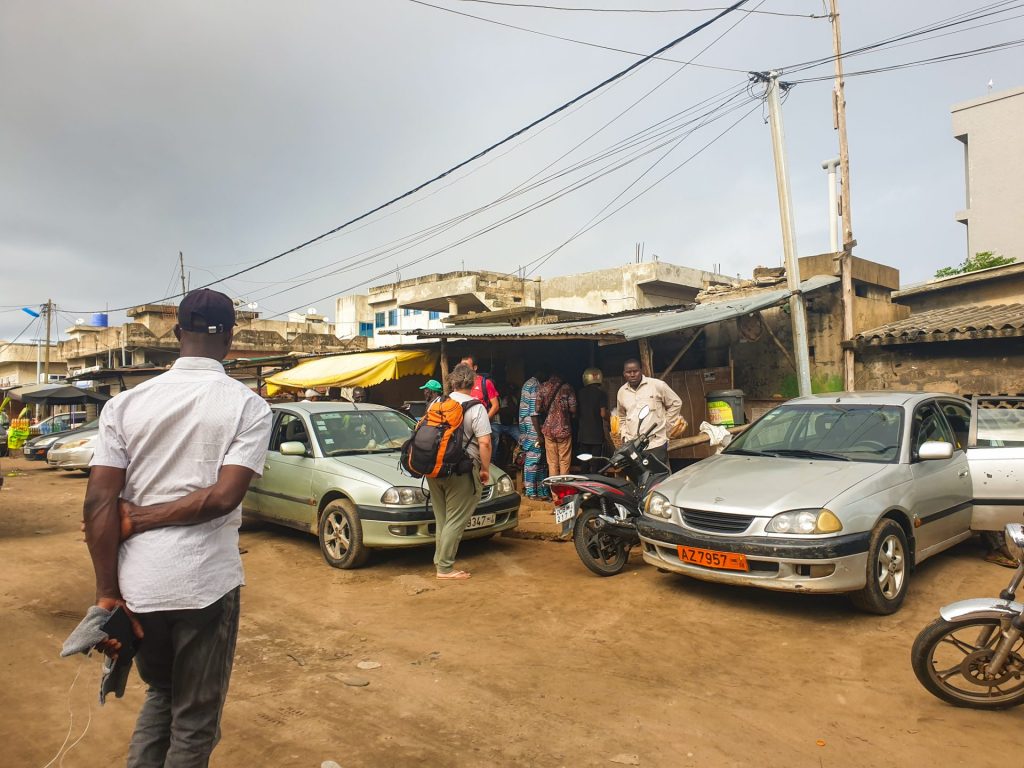
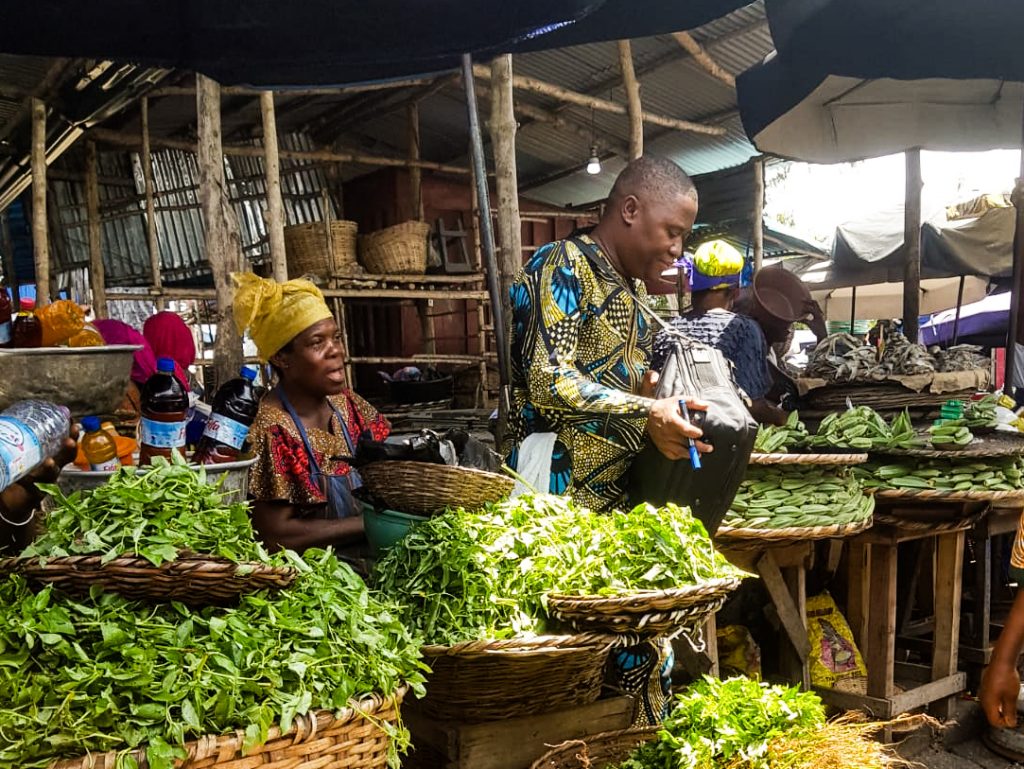

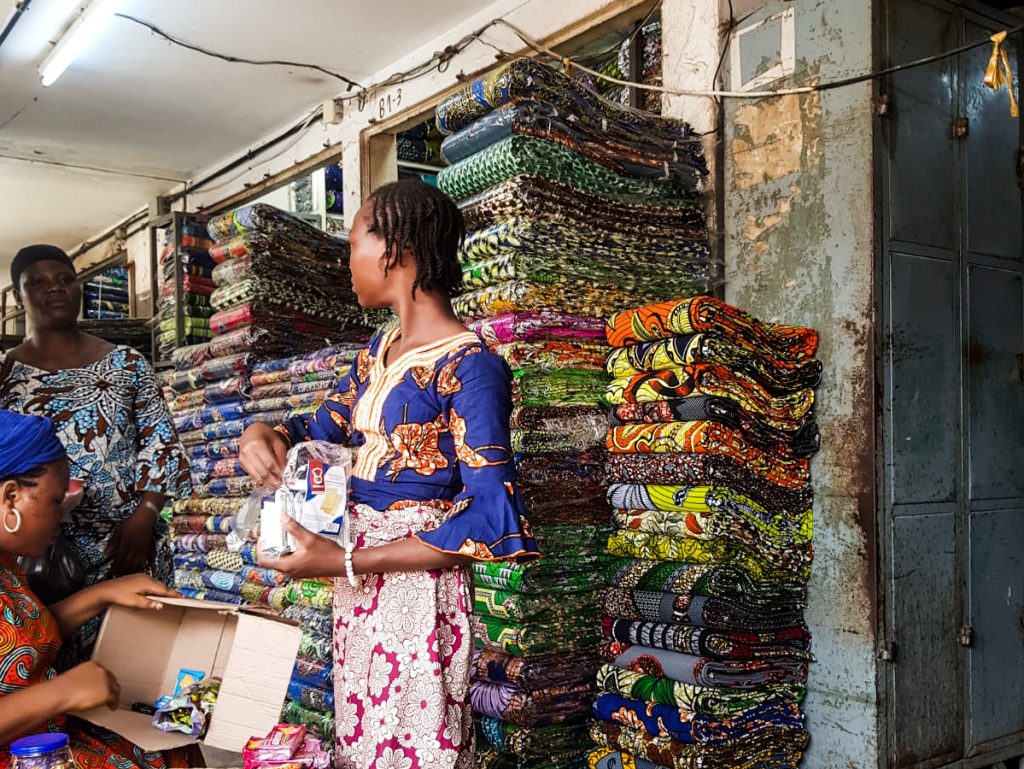
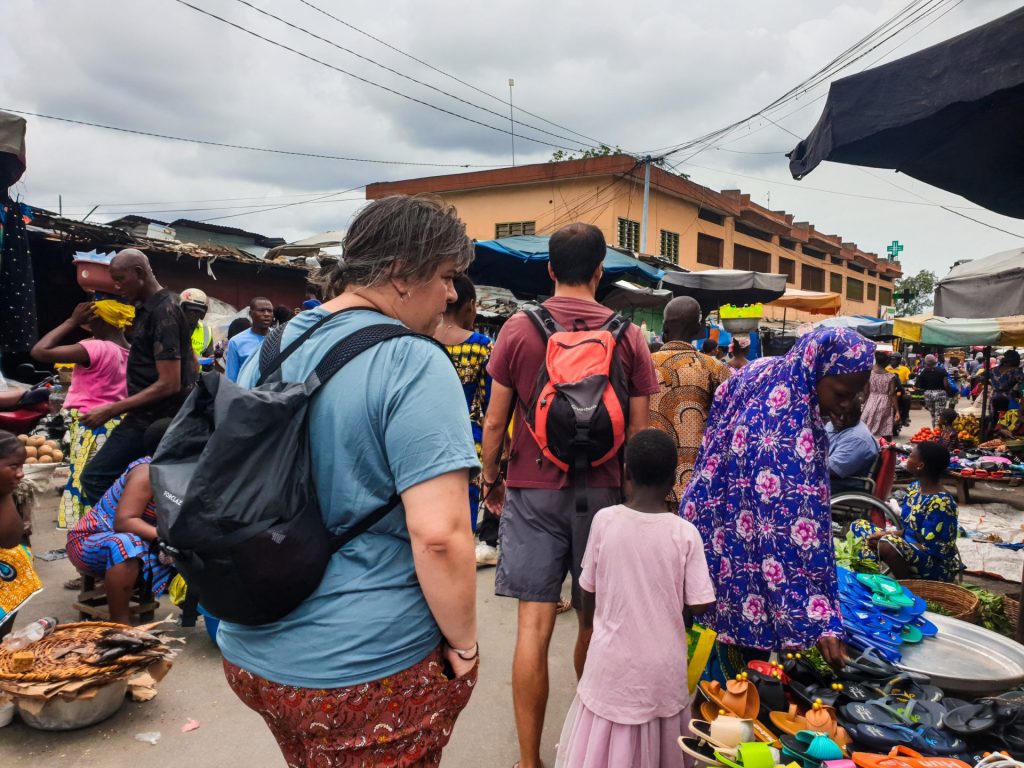





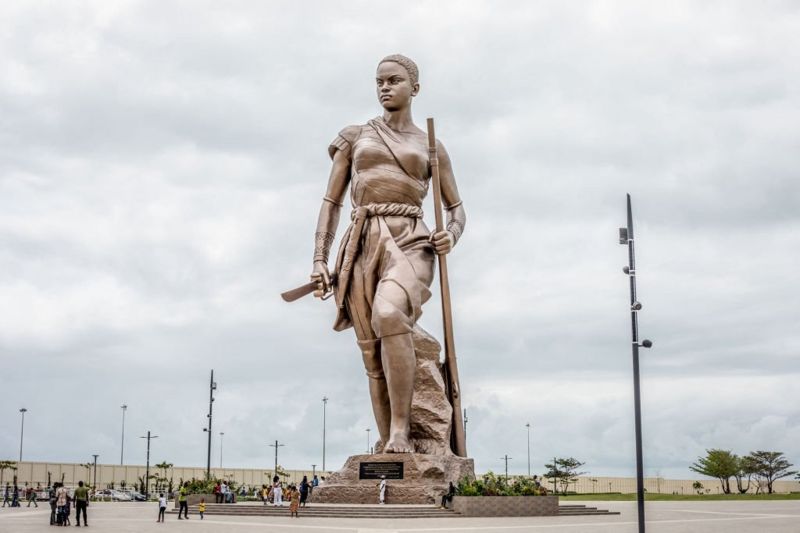
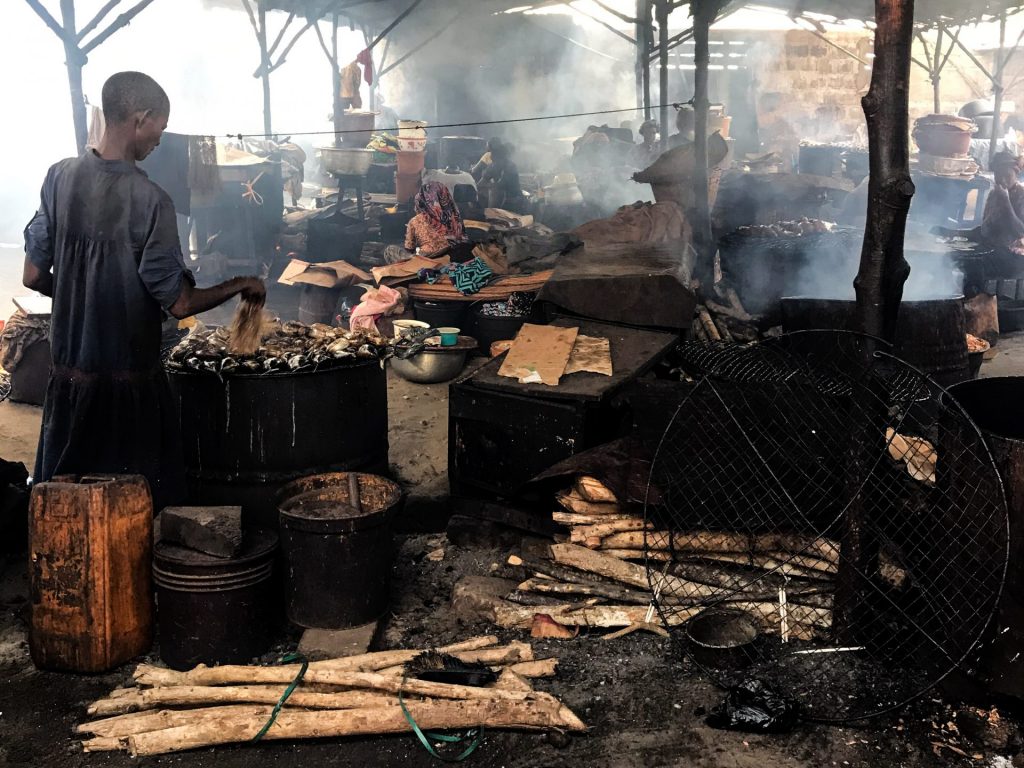
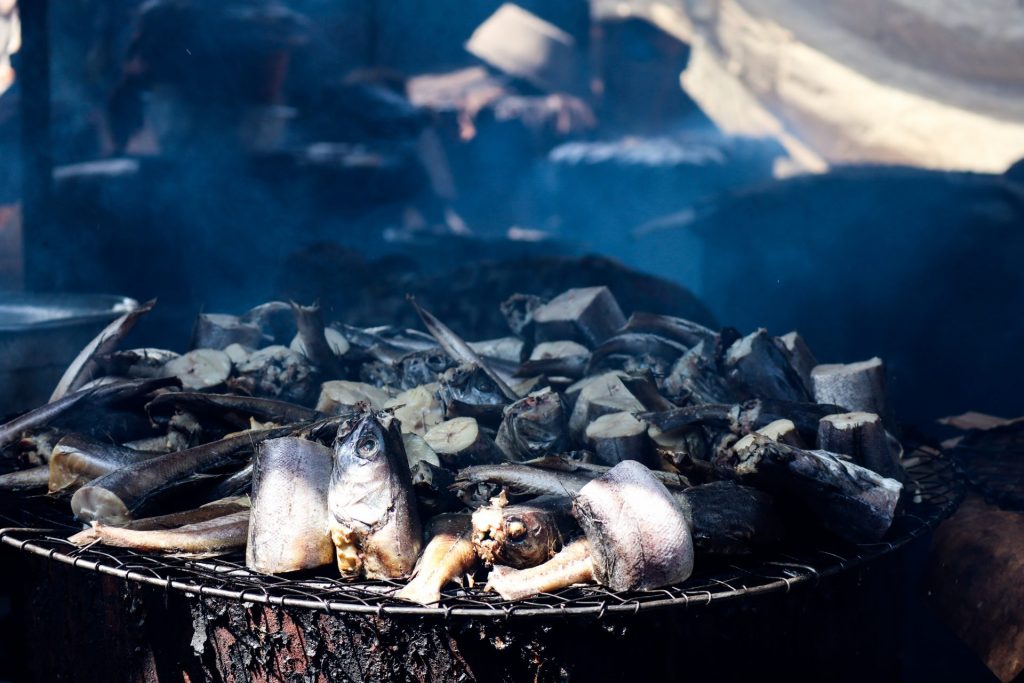


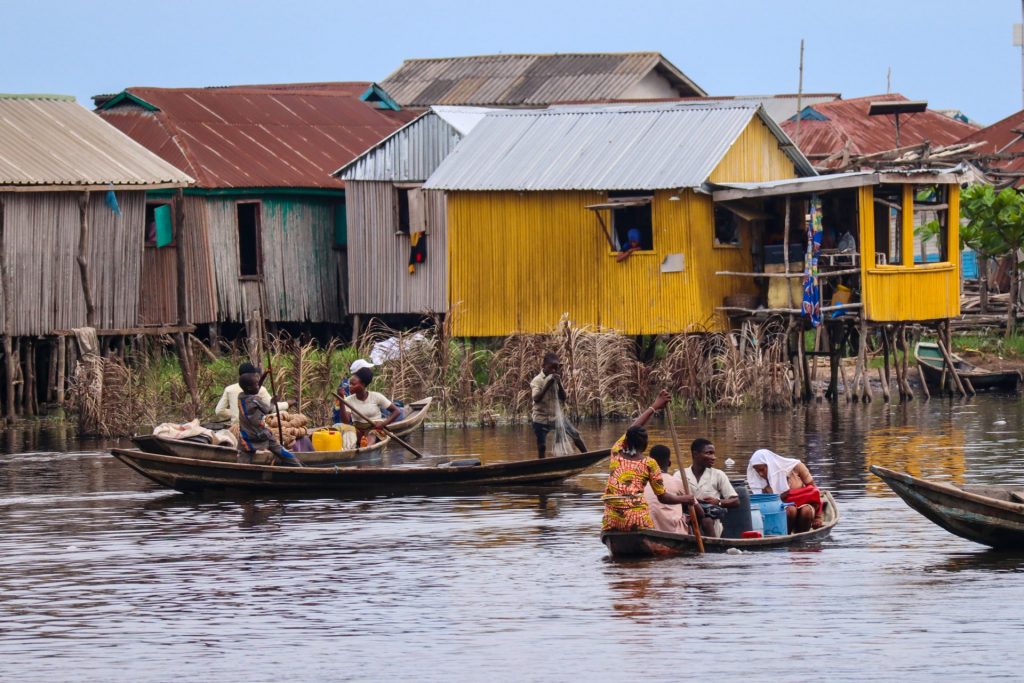
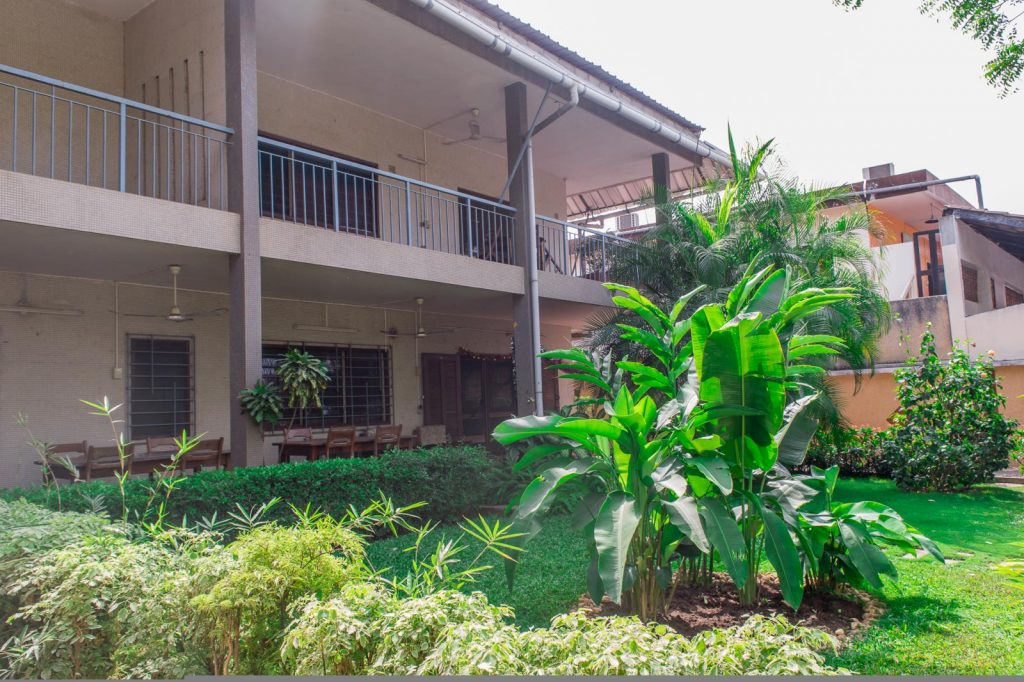
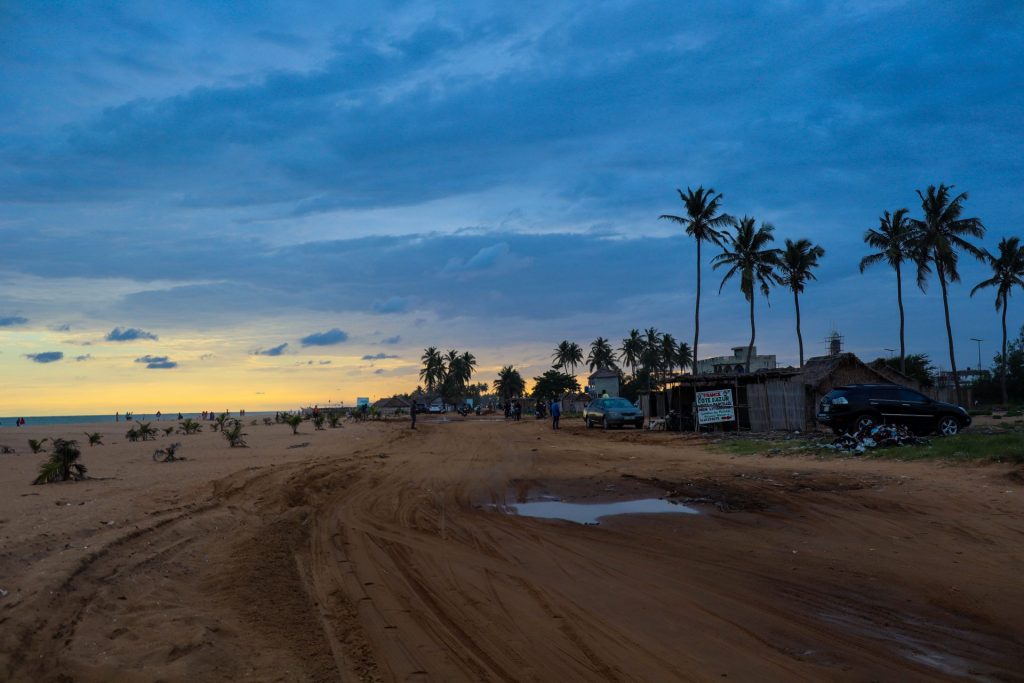

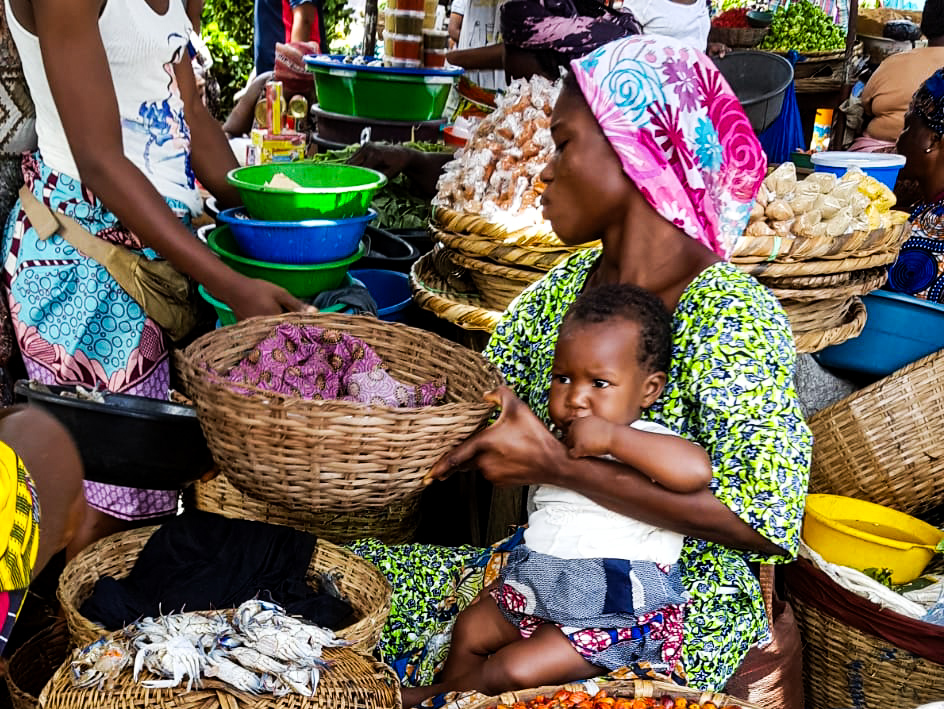

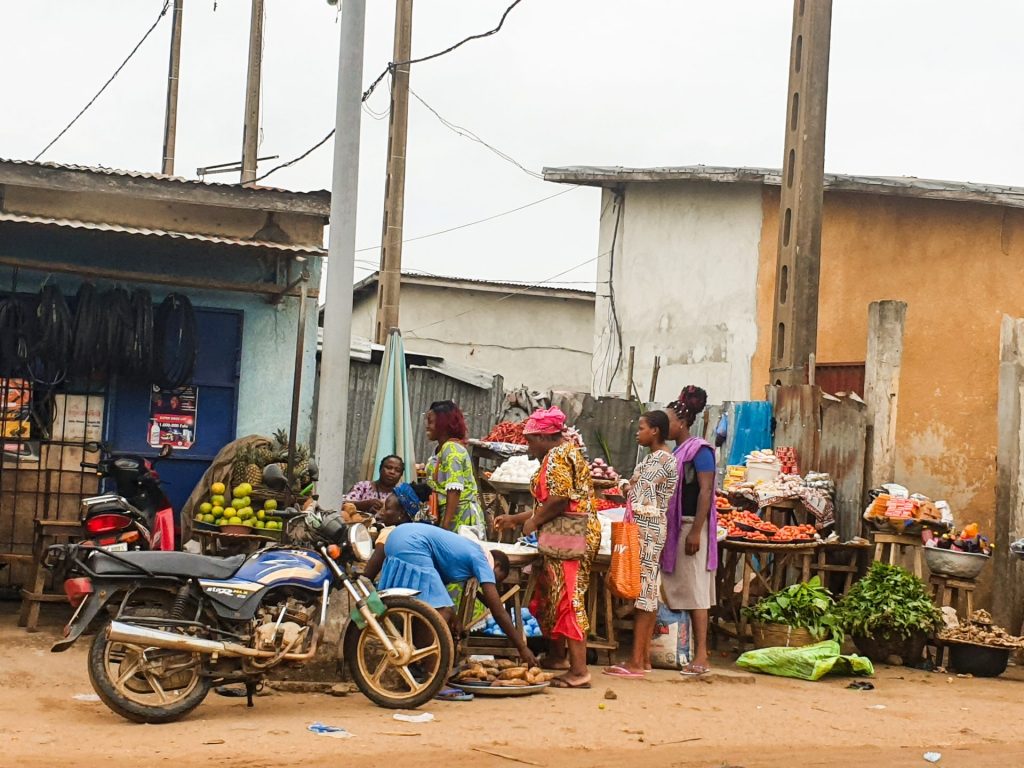

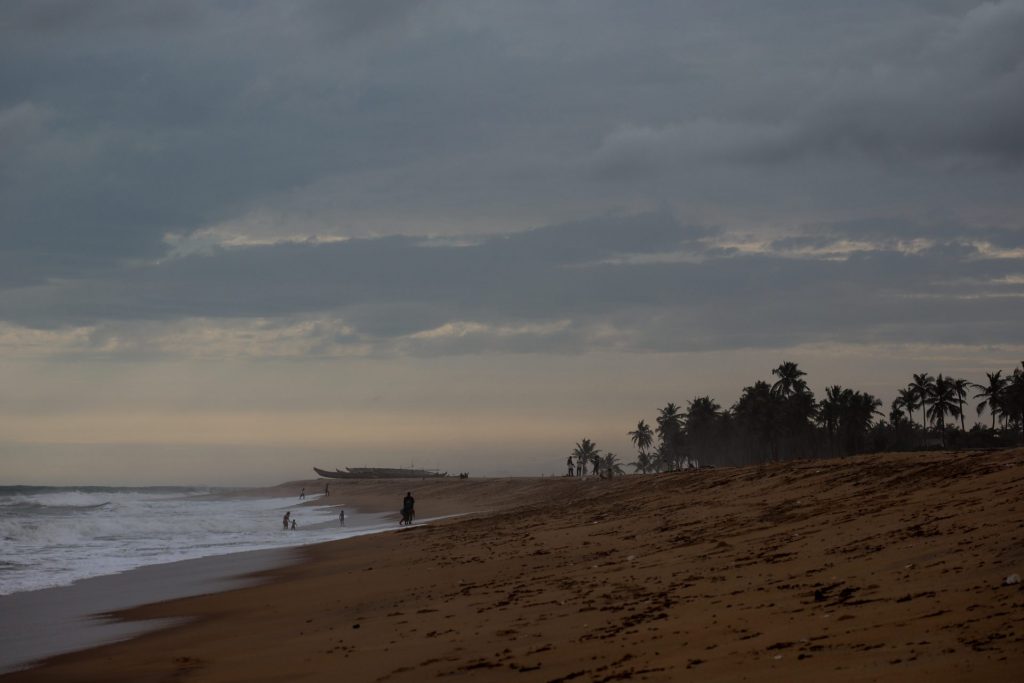

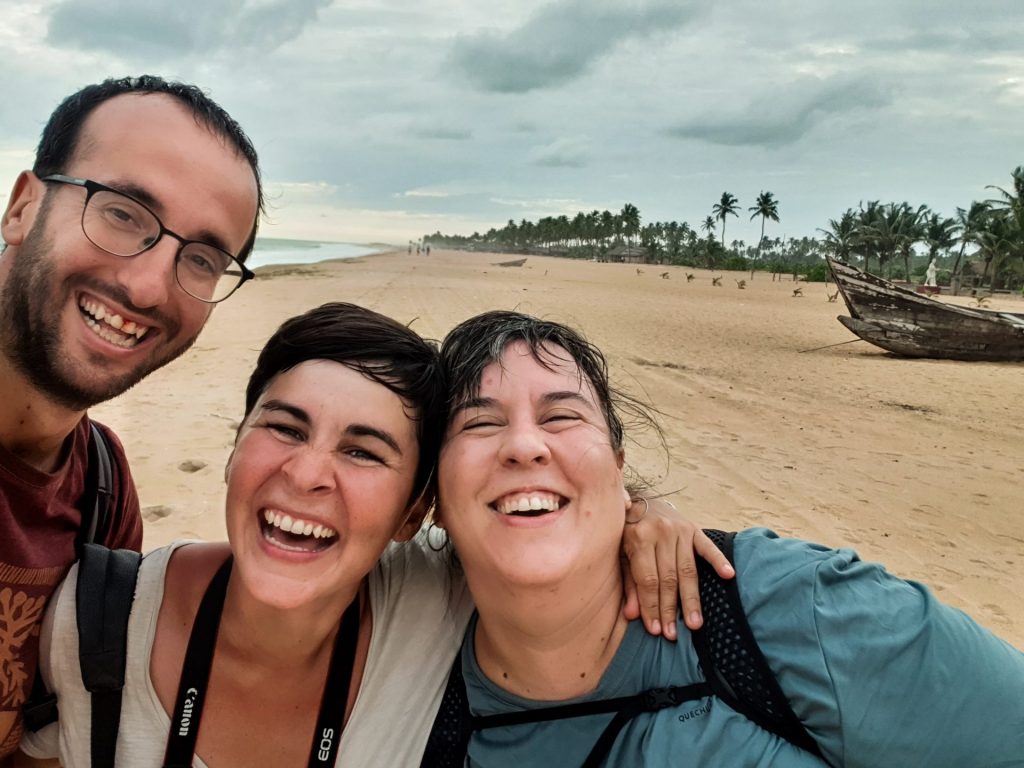
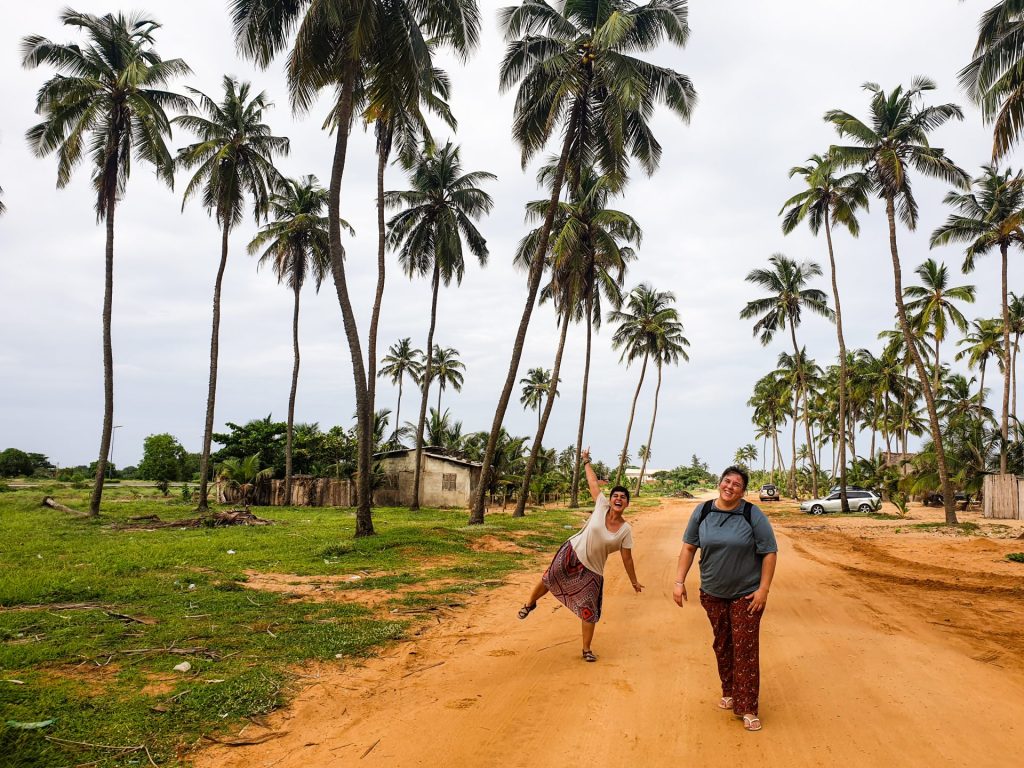


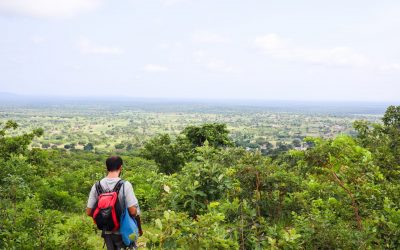

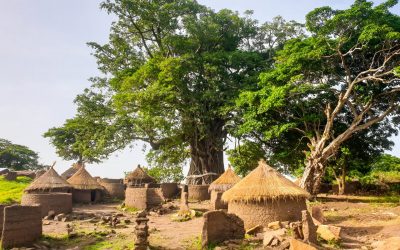

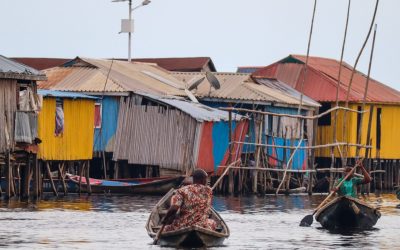
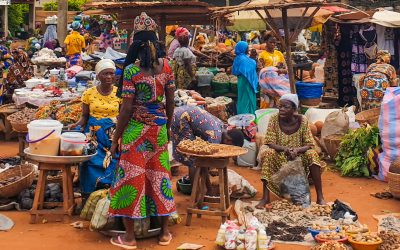
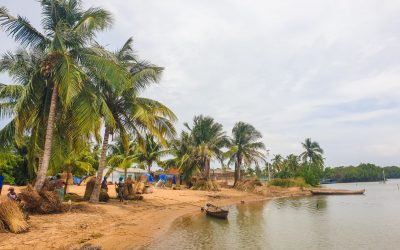
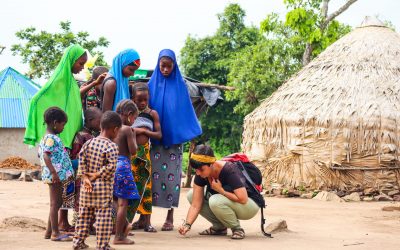
0 Comments